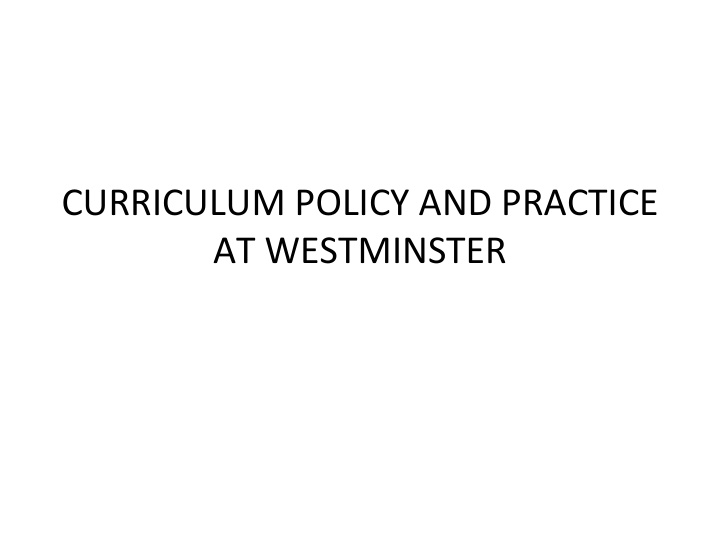



CURRICULUM POLICY AND PRACTICE AT WESTMINSTER
Educational purpose ‘The youth, which is growing to manhood, as tender shoots in the wood of our state, shall be liberally instructed in good books to the greater honour of the state.’ (Elizabeth I: 1560)
International perspective
How is the ‘curriculum’ defined?
The overall curriculum • formal taught curriculum • broader academic and cultural curriculum • pastoral curriculum • activities curriculum
The broader academic and cultural curriculum
The formal taught curriculum: The Basic Structure Year 9 12 subjects: English, Mathematics, three separate sciences, Latin, Ancient Greek, French, Geography, History, Religious Studies and Physical Education 7 introductory courses: PSHE, Product Design, Electronics, Drama, Music, Art and ICT Year 11 10/11 subjects for I/GCSE Years 12 and 13 4/5 subjects for A ‐ level/Cambridge Pre ‐ U Year 12 8 ‐ week courses of broadening non ‐ examined subjects
Principles behind the design of the formal taught curriculum: Years 9 ‐ 11 • breadth and balance • division into subjects • gradual specialization • languages • practical / creative subjects • non ‐ examined courses
Principles behind the design of the formal taught curriculum: Years 12 ‐ 13 • depth through breadth • global perspectives • teaching for learning
Principles behind the design of the formal taught curriculum: curriculum first, assessment second • the curriculum is designed first • a best ‐ fit examination syllabus is then chosen • assessment does not over ‐ determine what is taught
Recommend
More recommend